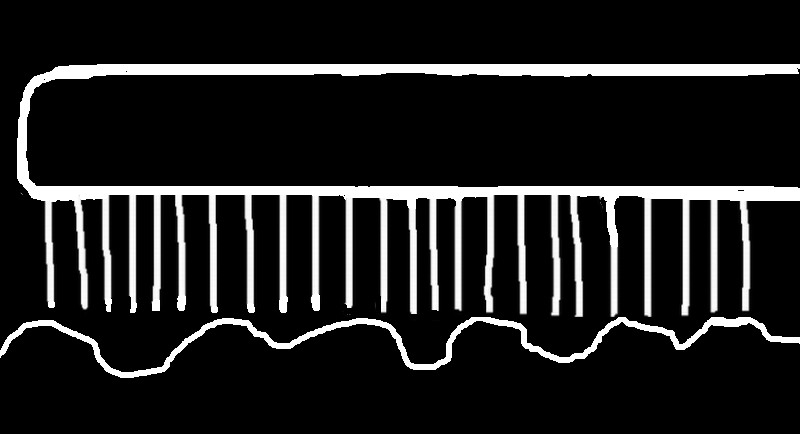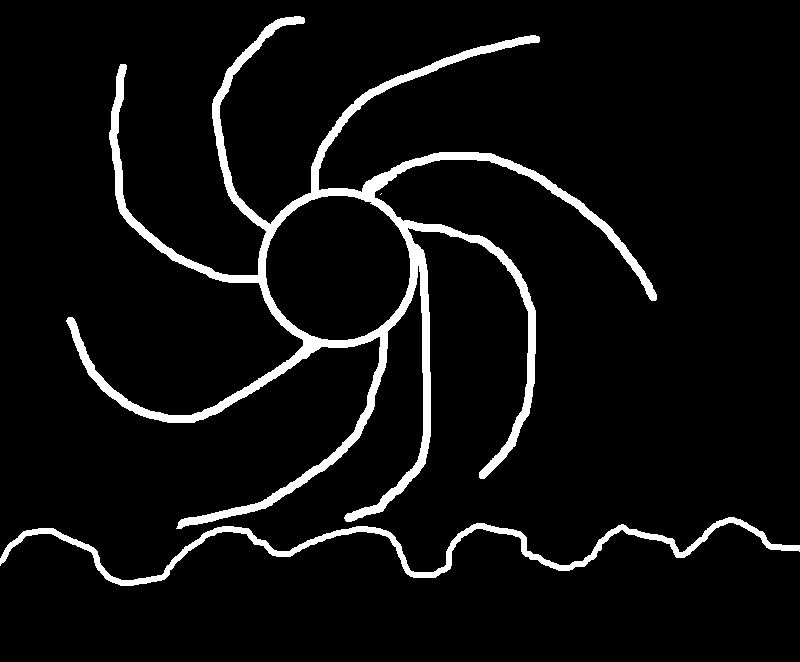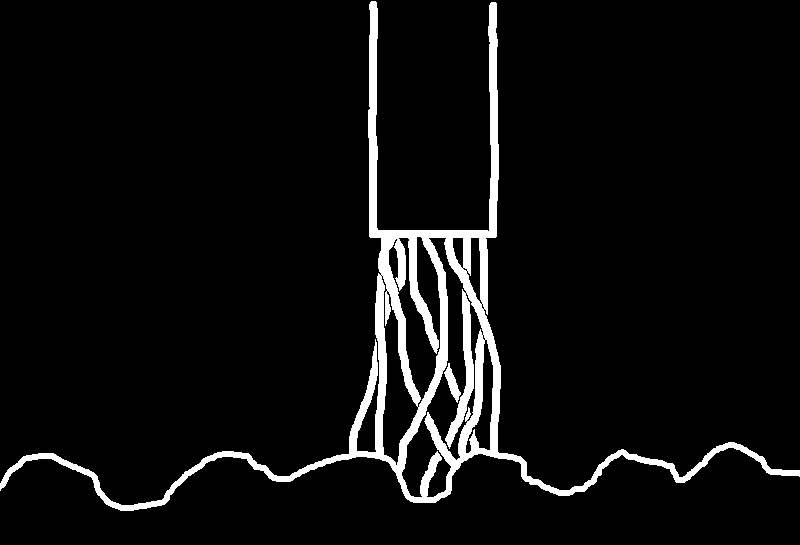
Mode of Action
Close up the surface of an alloy casting looks like the Moon with hills and valleys, mounds, craters, pockmarks, ridges and lines.

The commonly used toothbrush style of wire brush has bundles of bristles mounted perpendicularly to the handle and arranged in rows. With light pressure the bristle ends glide over the highest points on the alloy surface. If pressed harder they can go a little further in, but because the bristles are short the force required to push some of the bristle tips into the lower bits can produce visible scratching from the other bristles rubbing too hard on the upper parts ( and can snap the handle )
The natural tendency is to tilt the handle so just a few bristles at the front or edges are brought into contact with the surface. The science behind this is Pressure = Force / Area. The smaller the contact area the greater the pressure, the better the cleaning effect - take a look at any well-used hand brush and see where the bristles are worn down

With rotary brushing the sides of the bristles are dragged across the highest points only, the bristle tips cannot contact the lower bits unless the tops are worn down, no matter how much force is applied. Too much force or speed and the alloy surface can be heated enough to discolour or melt.

The bristle tips of the Machinery Cleanery brushes are able to be brought into contact with ALL of a cast alloy surface, from every direction. The small footprint means sufficient pressure to remove corrosion and firm deposits can be achieved without much force.

Now for some more maths. A typical wire toothbrush may have 3 rows of eight bundles with 15 bristles per bundle, and a contact area 8 mm by 25 mm. That's 360 bristles in an area of 200 square mm. A size D SS for Alloy Machinery Cleanery brush, the largest, has around 400 bristles squashed into a handle with an internal diameter of 4.8 mm. The contact area is pi x Diameter, 22/7 x 4.8 = 15 square mm. As they are a firm fit within the handle there is some expansion at the free ends so make that area 20 square mm. That's 20 bristles per square mm !
The Machinery Cleanery wire bristles are thinner than those in other wire brushes and here's a bit of physics. Wire is usually used for it's flexibility and tensile strength but with brushes it's the opposite, the force is applied in the reverse direction. A thin wire will flex and bend easier than a thicker wire of the same material when compressed. The shorter the piece the harder it is to bend and a short bristled brush will have a more aggressive bite. For the brushmaker there's a trade-off between the bristle length, the thickness and the stiffness of the steel. Longer and thinner bristles would be too soft unless a more rigid grade of steel is used, and that is another major difference between M C brushes and the rest.
Looking at where each individual bristle tip touches the surface the tiny contact area allows for surprisingly high pressure to be developed. As already mentioned the bristles in a toothbrush are quite short whereas M C brushes have the bristles fixed at the base of the handle and are very much longer. This enables the compression force to be spread over a greater distance, and there is not much difference in pressure between a bristle tip pressing on the highest peak or one down in the lowest depression. The pressure is evened out across many bristles resulting in uniform surface cleaning, and the risk of visible scratching is eliminated.
** * * * * * * * * * * * * * * * * ' * * * * * * * * * * * * * * * **
Close this page to return to where you were
Home